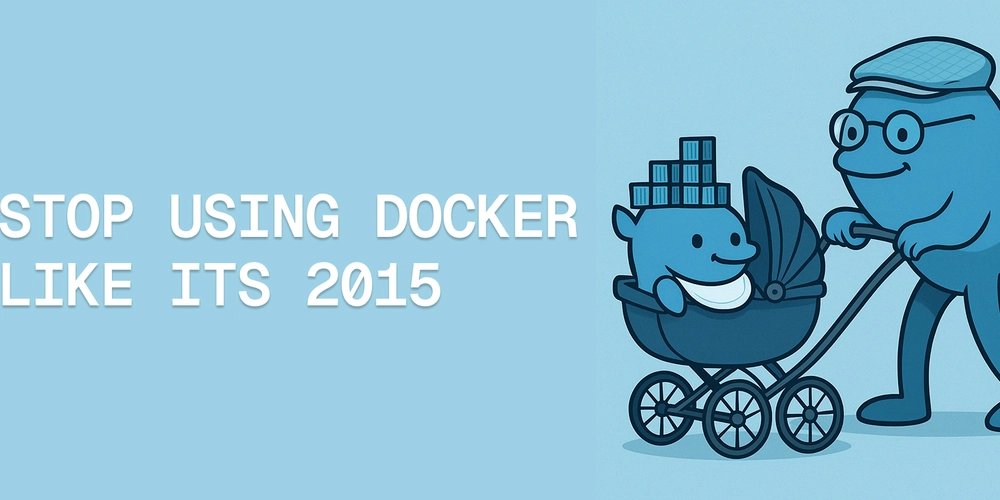Why Chaos Engineering is Essential for SREs
In today’s world of cloud-native architectures, distributed systems, and ever-increasing user expectations, system reliability is paramount. Ensuring a seamless user experience while managing complex infrastructure is the cornerstone of Site Reliability Engineering (SRE). One discipline that has become increasingly crucial in helping SREs meet their goals is Chaos Engineering. Chaos Engineering is no longer just a buzzword or a niche practice. It is a foundational methodology for testing system resilience, understanding system behavior under stress, and proactively preventing outages before they happen. This article explores what Chaos Engineering is, how it integrates with the role of SREs, and why it is essential for modern reliability engineering. What is Chaos Engineering? Chaos Engineering is the discipline of experimenting on a system to build confidence in its ability to withstand turbulent conditions in production. In simpler terms, it’s about intentionally injecting failures—such as shutting down servers, increasing latency, or simulating network outages—into a system to observe how it behaves. The goal is to identify weaknesses before they become real-world outages. Chaos Engineering was popularized by Netflix with its infamous “Chaos Monkey” tool, which randomly terminates virtual machines to test the resilience of their services. Since then, many organizations have adopted and expanded on these principles. Understanding the SRE Role Before diving into why Chaos Engineering is essential for SREs, it’s important to understand the core responsibilities of an SRE. SREs are tasked with: Ensuring reliability, availability, and performance of systems. Managing incident response, monitoring, and alerting. Creating and enforcing Service Level Objectives (SLOs) and Service Level Indicators (SLIs). Building automation tools for operations. Collaborating with development teams to ensure systems are designed with reliability in mind. Given these responsibilities, SREs operate at the intersection of software engineering and IT operations. Their primary goal is to reduce the frequency and impact of incidents, and that’s exactly where Chaos Engineering comes into play. Why Chaos Engineering is Essential for SREs 1. Proactive Resilience Testing Traditional testing often fails to account for real-world conditions that arise in production environments. Unit tests and integration tests are good at checking if a service works as expected in normal conditions, but they don’t simulate failures, latency, or intermittent connectivity. Chaos Engineering enables SREs to test how systems behave in unhappy paths—the situations where things go wrong. By proactively simulating real-world issues, SREs can fix vulnerabilities before users are affected. Example: What happens if a database goes down for 30 seconds? Do services retry correctly? Will users see errors or a fallback message? Chaos tests provide the answers. 2. Validating Redundancy and Failover Mechanisms Most production systems today are built with redundancy—think of multiple data centers, replicas of databases, or microservices spread across clusters. However, redundancy only works if failover mechanisms are properly configured. Chaos Engineering lets SREs validate that when a node or service fails, traffic is rerouted as expected, without user impact. Without testing, there’s a risk that configurations might be incorrect or that failover introduces unexpected latency or errors. These are exactly the kinds of surprises Chaos Engineering aims to eliminate. 3. Improving Incident Response Preparedness SREs often serve as first responders when things go wrong. Chaos experiments simulate incidents in a controlled manner, allowing teams to: Practice incident response playbooks. Improve alerting and monitoring thresholds. Evaluate on-call rotations and handoffs. By rehearsing real failures, SREs can ensure they’re not caught off guard when the real thing happens. Think of it as a fire drill for production systems. 4. Data-Driven Risk Management One of the SRE tenets is making decisions based on measured risk. When engineering teams push code or scale infrastructure, it’s important to understand the reliability implications of those changes. Chaos Engineering provides empirical evidence about how resilient a system is under specific failure conditions. This data helps SREs make informed decisions about: Deployments Infrastructure changes SLA commitments Instead of relying on assumptions, SREs can use chaos experiments to back their decisions with concrete observations. 5. Reducing MTTR (Mean Time to Recovery) Incidents will happen. What matters is how quickly and effectively teams can recover. Chaos Engineering helps reduce MTTR by: Identifying failure modes ahead of time. Enhancing observability with the right logs and metrics. Training teams to respond effectively. By continuously uncovering gaps and weaknes

In today’s world of cloud-native architectures, distributed systems, and ever-increasing user expectations, system reliability is paramount. Ensuring a seamless user experience while managing complex infrastructure is the cornerstone of Site Reliability Engineering (SRE). One discipline that has become increasingly crucial in helping SREs meet their goals is Chaos Engineering.
Chaos Engineering is no longer just a buzzword or a niche practice. It is a foundational methodology for testing system resilience, understanding system behavior under stress, and proactively preventing outages before they happen. This article explores what Chaos Engineering is, how it integrates with the role of SREs, and why it is essential for modern reliability engineering.
What is Chaos Engineering?
Chaos Engineering is the discipline of experimenting on a system to build confidence in its ability to withstand turbulent conditions in production.
In simpler terms, it’s about intentionally injecting failures—such as shutting down servers, increasing latency, or simulating network outages—into a system to observe how it behaves. The goal is to identify weaknesses before they become real-world outages.
Chaos Engineering was popularized by Netflix with its infamous “Chaos Monkey” tool, which randomly terminates virtual machines to test the resilience of their services. Since then, many organizations have adopted and expanded on these principles.
Understanding the SRE Role
Before diving into why Chaos Engineering is essential for SREs, it’s important to understand the core responsibilities of an SRE.
SREs are tasked with:
Ensuring reliability, availability, and performance of systems.
Managing incident response, monitoring, and alerting.
Creating and enforcing Service Level Objectives (SLOs) and Service Level Indicators (SLIs).
Building automation tools for operations.
Collaborating with development teams to ensure systems are designed with reliability in mind.
Given these responsibilities, SREs operate at the intersection of software engineering and IT operations. Their primary goal is to reduce the frequency and impact of incidents, and that’s exactly where Chaos Engineering comes into play.
Why Chaos Engineering is Essential for SREs
1. Proactive Resilience Testing
Traditional testing often fails to account for real-world conditions that arise in production environments. Unit tests and integration tests are good at checking if a service works as expected in normal conditions, but they don’t simulate failures, latency, or intermittent connectivity.
Chaos Engineering enables SREs to test how systems behave in unhappy paths—the situations where things go wrong. By proactively simulating real-world issues, SREs can fix vulnerabilities before users are affected.
Example: What happens if a database goes down for 30 seconds? Do services retry correctly? Will users see errors or a fallback message? Chaos tests provide the answers.
2. Validating Redundancy and Failover Mechanisms
Most production systems today are built with redundancy—think of multiple data centers, replicas of databases, or microservices spread across clusters. However, redundancy only works if failover mechanisms are properly configured.
Chaos Engineering lets SREs validate that when a node or service fails, traffic is rerouted as expected, without user impact.
Without testing, there’s a risk that configurations might be incorrect or that failover introduces unexpected latency or errors. These are exactly the kinds of surprises Chaos Engineering aims to eliminate.
3. Improving Incident Response Preparedness
SREs often serve as first responders when things go wrong. Chaos experiments simulate incidents in a controlled manner, allowing teams to:
- Practice incident response playbooks.
- Improve alerting and monitoring thresholds.
- Evaluate on-call rotations and handoffs.
By rehearsing real failures, SREs can ensure they’re not caught off guard when the real thing happens. Think of it as a fire drill for production systems.
4. Data-Driven Risk Management
One of the SRE tenets is making decisions based on measured risk. When engineering teams push code or scale infrastructure, it’s important to understand the reliability implications of those changes.
Chaos Engineering provides empirical evidence about how resilient a system is under specific failure conditions. This data helps SREs make informed decisions about:
- Deployments
- Infrastructure changes
- SLA commitments
Instead of relying on assumptions, SREs can use chaos experiments to back their decisions with concrete observations.
5. Reducing MTTR (Mean Time to Recovery)
Incidents will happen. What matters is how quickly and effectively teams can recover. Chaos Engineering helps reduce MTTR by:
- Identifying failure modes ahead of time.
- Enhancing observability with the right logs and metrics.
- Training teams to respond effectively.
By continuously uncovering gaps and weaknesses, SREs are better equipped to restore services swiftly during an actual outage.
6. Fostering a Culture of Reliability
One of the overlooked benefits of Chaos Engineering is its impact on organizational culture. It encourages teams to prioritize reliability as a shared responsibility, rather than an afterthought.
When SREs collaborate with developers to design and run chaos experiments, it creates a feedback loop where reliability becomes a design goal. This aligns well with the DevOps principles of shared ownership and continuous improvement.
Key Practices for SREs Implementing Chaos Engineering
If you’re an SRE looking to integrate Chaos Engineering into your workflow, here are some best practices:
a. Start Small, Think Big
Begin with small, scoped experiments:
What happens if a single pod crashes?
What if a service has 100ms of latency?
As confidence grows, expand to more complex failure scenarios like multi-region outages, network partitioning, or killing service dependencies.
b. Run Experiments in Staging First
While Chaos Engineering in production has its place, it’s best to start in a staging environment that mirrors production. This lets you safely observe system behavior and fine-tune your experiments.
Once you have confidence and guardrails, you can selectively introduce chaos into production (e.g., with canary deployments or off-peak testing).
c. Automate and Integrate
Automation is key. Tools like:
- Qinfinite by Quinnox
- Gremlin
- Chaos Mesh
- LitmusChaos
AWS Fault Injection Simulator
allow SREs to schedule, orchestrate, and monitor chaos experiments. Integration with CI/CD pipelines ensures resilience is continuously tested.
d. Measure Impact with SLOs and SLIs
Chaos Engineering should tie back to your Service Level Objectives. Each experiment should answer:
Did this impact our latency or error budget?
How close are we to violating our SLOs?
What metrics changed during the test?
This approach ensures chaos is purposeful and aligned with business goals.
e. Build a Blameless Culture
When failures are exposed, it’s essential to maintain a blameless culture. The purpose of Chaos Engineering isn’t to catch people making mistakes—it’s to make the system more robust.
Postmortems and learnings from chaos experiments should focus on system design, observability gaps, and response processes—not individual blame.
Real-World Examples of Chaos Engineering Success
Netflix
Netflix’s Chaos Monkey and the broader Simian Army suite have become synonymous with Chaos Engineering. By embracing failure as a learning tool, Netflix has built one of the most resilient streaming platforms globally.
Amazon
Amazon runs thousands of failure simulations regularly to test everything from AZ failures to disk corruptions. These drills have helped them keep critical services like AWS Lambda and EC2 highly available.
LinkedIn uses Chaos Engineering to test its Kafka pipeline, simulate slowdowns in database replication, and validate routing in its service mesh. This has significantly improved its MTTR during real incidents.
Challenges and Considerations
While Chaos Engineering is powerful, it comes with some caveats:
Risk of introducing real outages: Especially in production. Mitigate with safeguards, alerts, and timeboxing experiments.
Organizational buy-in: It requires cross-team collaboration and management support.
Cultural resistance: Teams might be hesitant to “break things on purpose.” Education and small wins can help build momentum.
SREs must balance the value of learning with the risk of disruption.
Conclusion: Chaos as a Catalyst for Reliability
For SREs, Chaos Engineering is not just a nice-to-have; it's an essential tool in the reliability toolkit. It transforms the way teams think about failure—from something to avoid at all costs to something to embrace, simulate, and learn from.
By proactively testing systems under adverse conditions, SREs gain deeper insight into system behavior, uncover hidden weaknesses, and build more resilient infrastructure. Most importantly, it empowers them to uphold the promise of reliability in an increasingly unpredictable digital landscape.
In a world where downtime costs millions and user trust is fragile, Chaos Engineering is not chaos—it’s clarity.




























![[Webinar] AI Is Already Inside Your SaaS Stack — Learn How to Prevent the Next Silent Breach](https://blogger.googleusercontent.com/img/b/R29vZ2xl/AVvXsEiOWn65wd33dg2uO99NrtKbpYLfcepwOLidQDMls0HXKlA91k6HURluRA4WXgJRAZldEe1VReMQZyyYt1PgnoAn5JPpILsWlXIzmrBSs_TBoyPwO7hZrWouBg2-O3mdeoeSGY-l9_bsZB7vbpKjTSvG93zNytjxgTaMPqo9iq9Z5pGa05CJOs9uXpwHFT4/s1600/ai-cyber.jpg?#)














































































































































![[The AI Show Episode 144]: ChatGPT’s New Memory, Shopify CEO’s Leaked “AI First” Memo, Google Cloud Next Releases, o3 and o4-mini Coming Soon & Llama 4’s Rocky Launch](https://www.marketingaiinstitute.com/hubfs/ep%20144%20cover.png)




































































































































































































![Rogue Company Elite tier list of best characters [April 2025]](https://media.pocketgamer.com/artwork/na-33136-1657102075/rogue-company-ios-android-tier-cover.jpg?#)








































































_Andreas_Prott_Alamy.jpg?width=1280&auto=webp&quality=80&disable=upscale#)




























































































![What’s new in Android’s April 2025 Google System Updates [U: 4/18]](https://i0.wp.com/9to5google.com/wp-content/uploads/sites/4/2025/01/google-play-services-3.jpg?resize=1200%2C628&quality=82&strip=all&ssl=1)










![Apple Watch Series 10 Back On Sale for $299! [Lowest Price Ever]](https://www.iclarified.com/images/news/96657/96657/96657-640.jpg)
![EU Postpones Apple App Store Fines Amid Tariff Negotiations [Report]](https://www.iclarified.com/images/news/97068/97068/97068-640.jpg)
![Apple Slips to Fifth in China's Smartphone Market with 9% Decline [Report]](https://www.iclarified.com/images/news/97065/97065/97065-640.jpg)



































































































































